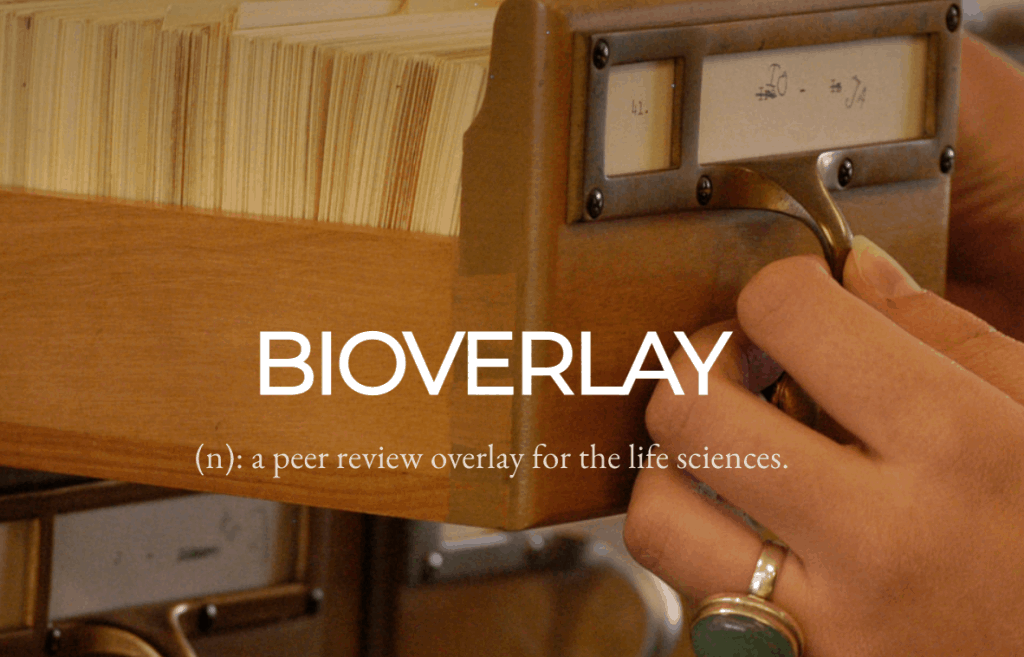- Profile
- Comments 0
- prev
- next
- Website
- Leave a comment
- prev
- next
In a nutshell
biOverlay is an overlay journal for the life sciences. Like an academic journal, editors solicit peer reviews of scientific literature (mostly, but not exclusively, preprints). Manuscripts are selected for general interest, and reviews are posted at biOverlay.org
Goals and intentions
- Curation of interesting work
- Feedback to authors
- Validation of soundness
- Public discussion of manuscript can go beyond scope of journal peer review
- Preprint peer reviews can be noted in cover letters
Project status
Types of outputs
Review process
-
Review requested byNon-authors
-
Reviewer selected byEditor, service, or community
-
Public interactionNo
-
Author responseNo
-
DecisionBinary decision
Review policy
-
Review coverageComplete paper
-
Reviewer identity known toPublic
-
Competing interestsNot included
Social Networks
Review features
-
Manuscript hostingNo
-
Review of code or dataNo
-
Eligible reviewers/editorsReviewers are selected by editors based on relevant expertise, similar to journal peer review. Editors self-nominate by submitting a CV and are reviewed by a the board of managing editors.
-
Tags or badgesNo
-
Criteria for inclusion
Associate Editors are asked to consider what the most impactful item for review is at the time that they select a preprint or publication to send out for review. An editor has viewed it as the scholarly output most worthy of review at that time.
Transparency
Results
-
Number of scholarly outputs commented on10-100
-
Results summary
We expected that preprints reviewed on biOverlay would be among the highest profile contributions within our various disciplines. Many preprints covered by biOverlay were published in numerous journals that seek to publish work of broad interest, suggesting that our associate editors were choosing papers that others found interesting as well.
We’re closing biOverlay now for a few reasons. First, it may have made it more difficult for authors to publish strong papers. We are aware of one case where reviews from biOverlay were used, but the authors, in a subsequent blog post, noted that they were then expected to respond to five reviewers. We would prefer that editors and authors take all comments under consideration and take a nuanced perspective to request that authors focus their efforts on the most salient ones. While some comments were overlapping, this didn’t make an apparently strong paper of great general interest more straightforward to publish. Second, without information as to the current submission/review status of a preprint, it was unclear if biOverlay reviews would be helpful. Third, without a clear impact on subsequent publication, potential reviewers lacked one incentive to accept our invitations. All of these factors were cited by potential reviewers when declining invitations.
We found that posting a preprint is insufficient to signal to potential reviewers that authors welcome feedback. New efforts, such as Review Commons from EMBO and ASAPbio, eLife’s preprint review trial, and PREreview’s live-streamed journal clubs provide author-initiated platforms to produce a similar outcome. Additionally, bioRxiv and other preprint servers could provide a way for authors to signal that they welcome feedback or report a manuscript’s submission/review status.
-
Results URL


Add a comment